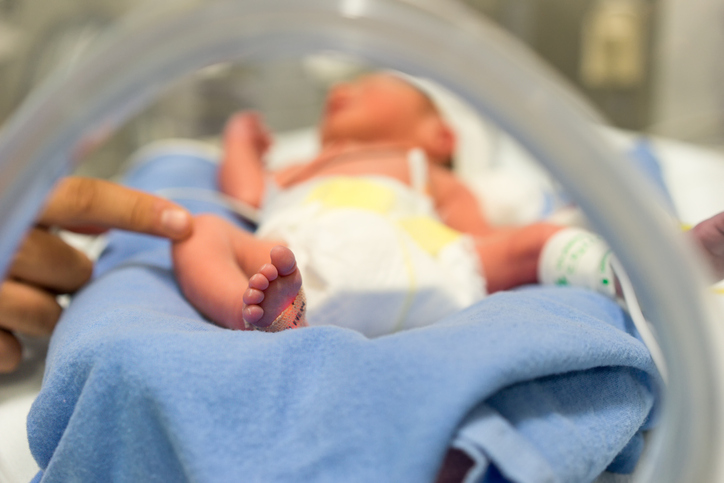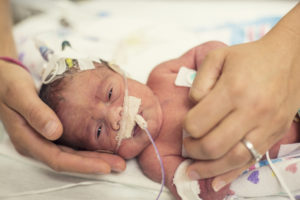 It is well known the US is experiencing an opioid crisis with nearly 130 individuals dying every day by overdose. The scars left behind when a loved one dies from overdose may haunt families for a lifetime. But the littlest victims, those babies born to opioid addicted mothers, often go on to have deficits that affect their growth and development, for a lifetime.
It is well known the US is experiencing an opioid crisis with nearly 130 individuals dying every day by overdose. The scars left behind when a loved one dies from overdose may haunt families for a lifetime. But the littlest victims, those babies born to opioid addicted mothers, often go on to have deficits that affect their growth and development, for a lifetime.
 According to the Center for Behavioral Health Statistics, in 2015, an estimated 26,000 pregnant women between the ages of 15-44 illicitly used opioid pain relievers and/or heroin. Infants born to mothers who abuse opioids may become addicted in the womb, as the opioids, and even the opioid medication treatments used to help treat the addiction, pass through the bloodstream from the mother to the fetus. Sadly, these newborns can experience withdrawal symptoms between 24-72 hours after birth, and, depending on the type of opioid used by the mother, can last upto 30 days.
According to the Center for Behavioral Health Statistics, in 2015, an estimated 26,000 pregnant women between the ages of 15-44 illicitly used opioid pain relievers and/or heroin. Infants born to mothers who abuse opioids may become addicted in the womb, as the opioids, and even the opioid medication treatments used to help treat the addiction, pass through the bloodstream from the mother to the fetus. Sadly, these newborns can experience withdrawal symptoms between 24-72 hours after birth, and, depending on the type of opioid used by the mother, can last upto 30 days.
These symptoms, including excessive crying, tremors, difficulty sleeping, and eating, are referred to as Neonatal Abstinence Syndrome (NAS) or Neonatal Opioid Withdawal Syndrome (NOWS). Data shows that 30-50% of infants whose mothers were exposed to opioids through illicit use, or, through Medication Assisted Treatment (MAT), experience symptoms of NAS.
 A new study published in Pediatrics, found thirty percent of infants born with NAS had a head circumference under the 10th percentile of neonates without antenatal exposure to opioids . These findings may indicate that opioid exposure in utero can result in a smaller head circumference and possibly, a smaller brain, leading to learning and behavioral disorders later in the child’s life. This is consistent with studies that have shown prenatal exposure to opioids is associated with reduced brain volumes in basal ganglia, thalamus, and cerebellar white matter in school-aged kids.
A new study published in Pediatrics, found thirty percent of infants born with NAS had a head circumference under the 10th percentile of neonates without antenatal exposure to opioids . These findings may indicate that opioid exposure in utero can result in a smaller head circumference and possibly, a smaller brain, leading to learning and behavioral disorders later in the child’s life. This is consistent with studies that have shown prenatal exposure to opioids is associated with reduced brain volumes in basal ganglia, thalamus, and cerebellar white matter in school-aged kids.
The authors also indicate that many of the mothers in the study were treated with opioid agonist medication assisted therapies such as buprenorphine or methadone, the current recommended treatment for opioid addiction. Medication assisted therapies (MAT) have been used to help mothers slowly withdraw from opioids, potentially reducing the chance of relapse, as well as limiting harm to the fetus, or even, preventing stillbirth.
Unfortunately, this study raises questions about the overall safety of the current recommended treatment, especially since 30-50% of infants whose mothers used opioids illicitly, or through monitored MAT, experienced symptoms of NAS.
Babies born addicted to opioids begin their journey in their new world with an unimaginable combination of central nervous system symptoms including, high pitched screams and body tremors, hyperactive reflexes, feeding difficulties from infrequent/excessive or uncoordinated sucking, metabolic and respiratory symptoms like sweating or hyperthermia, and gastrointestinal issues such as reflux, vomiting or loose stools. The symptoms of NAS occur as a result of the opioid receptors in their brains being suddenly cut off from continual stimulation from the opioids, which triggers abnormal neurotransmitter production.
 Once symptoms of NAS are suspected, medical professionals use an assessment called the Finnegan Neonatal Abstinence Scoring System after feedings — every 3-4 hours — which determines the severity of their symptoms. Simultaneously, non-pharmacological treatments are implemented to help calm the infant’s nervous system. Techniques such as placing the baby in a dimly lit room, rocking, swaddling, and Kangaroo (skin-to-skin) Care are implemented, but once NAS is diagnosed, neonatologists begin administering morphine or methadone to comfort the baby while normalizing the production of neurotransmitters.
Once symptoms of NAS are suspected, medical professionals use an assessment called the Finnegan Neonatal Abstinence Scoring System after feedings — every 3-4 hours — which determines the severity of their symptoms. Simultaneously, non-pharmacological treatments are implemented to help calm the infant’s nervous system. Techniques such as placing the baby in a dimly lit room, rocking, swaddling, and Kangaroo (skin-to-skin) Care are implemented, but once NAS is diagnosed, neonatologists begin administering morphine or methadone to comfort the baby while normalizing the production of neurotransmitters.
Infants with NAS are set up for early failure, often starting their life in a neonatal intensive care unit (NICU). Problems with bottle or breast feeding- a skill innate to typical infants, can result in the placement of nasogastric tubes secondary to difficulty with sucking, or, coordinating the suck-swallow-breathe pattern necessary for drinking from a bottle, or a mother’s breast. These infants often require help from a feeding specialist such as a speech-language pathologist as soon as they are born. The act of sucking from a bottle or the mother’s breast can be so exhaustive to an infant with NAS, and, other withdrawal symptoms like crying, fussing, or, excess sleeping can be so disruptive, their feedings tend to last only a brief 8 minutes out of a 30-minute period.

Complicating matters further, these infants have more episodes of leakage and rejection of the nipple while feeding. Consequently, the act of breast feeding, which has been shown to reduce severity of NAS and the dosage of pharmacological interventions, is complicated by such issues. Furthermore, feeding issues can result in longer NICU stays and tube feedings, and can be emotionally challenging for the mother, resulting in difficulty bonding. Mothers and caregivers often require education or coaching regarding appropriate feeding, communication, and bonding techniques to minimize poor developmental consequences.
Studies show a percentage of infants recovering from NAS go on to experience developmental, cognitive, behavioral, visual, motor, and sleeping problems as well as more frequent ear infections. Short attention span and hyperactivity in toddlers and in school age children effects 26-50% of children post-NAS contributing to the likelihood of learning disabilities including developmental delays and speech and language problems.
 Circumstances concerning other postnatal threats such as family instability, chronic stress and poverty may add to developmental and other health risks. Other maternal factors like psychological/psychiatric disorders, pregnancy complications, or high-risk lifestyles also influence child development. Access to health care and special education may help off-set these life challenges, however, studies show long term adverse developmental outcomes in children born with NAS.
Circumstances concerning other postnatal threats such as family instability, chronic stress and poverty may add to developmental and other health risks. Other maternal factors like psychological/psychiatric disorders, pregnancy complications, or high-risk lifestyles also influence child development. Access to health care and special education may help off-set these life challenges, however, studies show long term adverse developmental outcomes in children born with NAS.
While there are no definitive ways to determine which infants who have experienced NAS will end up with these difficulties post-NAS, looking at NAS infants’ head circumference may be the one step in helping to identify infants who might benefit from early intervention. And even though the signs of withdrawal subside, the long-term consequences on physical and mental health can last a lifetime.






Join the Conversation